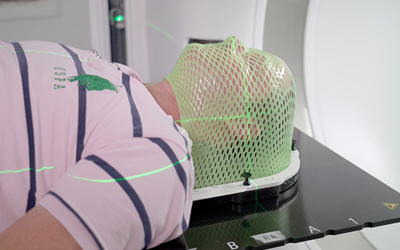
Tips for getting through treatment with a radiation therapy mask
While knowledge of cancer and initial treatment interventions have been around for hundreds of years, it is only within the last two centuries that significant advances in cancer treatment have taken place.
From surgery through to the latest in immunotherapy, learn more about the timeline of cancer treatment breakthroughs below.
Anaesthesia became widely available, with surgery becoming the treatment of choice over the next century.
The radical mastectomy procedure was developed, revolutionising the treatment of primary breast cancer.
Oophorectomy (surgical removal of the ovaries) was established as a treatment for breast cancer, identifying the link between the hormone oestrogen and breast cancer and paving the way for modern hormone therapy treatment.
German physicist Wilhelm Conrad Roentgen unveiled the ‘x-ray’ and within months, systems were developed to harness the x-ray and use this for diagnosis. Over the following three years, doctors began using radiation for the treatment of cancer.
The first successful brachytherapy treatment was delivered. Brachytherapy is a type of internal radiation therapy, where a radioactive source is placed beside or inside the tumour to deliver radiation over a period of time.
The first less invasive laparoscopic surgical procedures on humans were published.
Benefits of fractionated radiation therapy treatments were identified, where smaller doses of radiation are delivered over several weeks (allowing time for healthy cells to repair themselves).
The link between prostate cancer and the hormone testosterone was identified. This led to the development of drugs that block male hormones to effectively treat prostate cancer over the following decades.
Nitrogen mustard, a compound related to mustard gas, was found to successfully treat lymphoma. This lead to the development of several more effective ‘alkylating’ chemotherapy agents.
The compound aminopterin, a predecessor to common chemotherapy drug methotrexate, was first used on children with acute leukaemia which resulted in remission. This was a pivotal moment in the development of modern chemotherapy.
Metastatic (advanced) cancer was first cured using a chemotherapy drug known as methotrexate.
Intraoperative radiation therapy treatment was introduced. This involves the delivery of radiation during the surgical removal of a tumour.
Imaging tests such as ultrasound and CT, MRI and PET scans began replacing the need for exploratory surgeries. Surgery also began to move towards less radical procedures, such as lumpectomy rather than radical mastectomy for breast cancer.
Adjuvant chemotherapy was successfully used in the treatment of breast cancer.
This was also the year that monoclonal antibodies (replicas of proteins made by the body’s immune system to fight viruses) were first produced, which lead to the development of antibody-based immunotherapies for cancer over the following decades.
The antibody and antigen that would lead to the development of immunotherapy drug Rituxan were discovered. Rituxan was the first therapeutic antibody approved for oncology patients and is used in the treatment of lymphoma.
Intensity-modulated radiation therapy was invented, a highly precise radiation therapy technique which delivers high doses of radiation to cancerous tumours, while limiting the impact of radiation on healthy surrounding tissue.
The clinical antibody Herceptin was developed. Herceptin is regarded as a revolutionary immunotherapy treatment for breast cancer.
A new radiation therapy technique, known as stereotactic radiation therapy, was invented. By using precise technology stereotactic radiation therapy can be delivered in one to five treatments, compared to traditional radiation therapy which delivers smaller doses over many weeks.
The Gardasil vaccine received TGA approval, leading to the launch of the world’s first national HPV vaccination program in Australia.
Adaptive radiation therapy, a type of image-guided radiation therapy that allows radiation oncologists to replan and optimise the treatment during the course, was introduced.
Cancer research plays an important role in the development of new cancer treatment breakthroughs. Icon proudly offers Australia’s largest private cancer clinical trials program, providing hope and opportunity for cancer patients to access new treatments and helping us to improve cancer care for people now and into the future. It is these trials and the doctors and patients involved today, that advance the way we can treat cancer tomorrow

The content on the Icon Cancer Centre website is for informational purposes only and should not be considered medical advice. It is not a substitute for consultation with a qualified medical practitioner. For personalised medical guidance, please consult with your GP or another qualified healthcare provider.

Discover our comprehensive collection of content designed to inform, support, and guide you through every aspect of cancer care. From the latest news and updates to personal patient experiences and educational resources, these materials provide valuable insights to help you better understand cancer, treatment options, and the journey ahead.